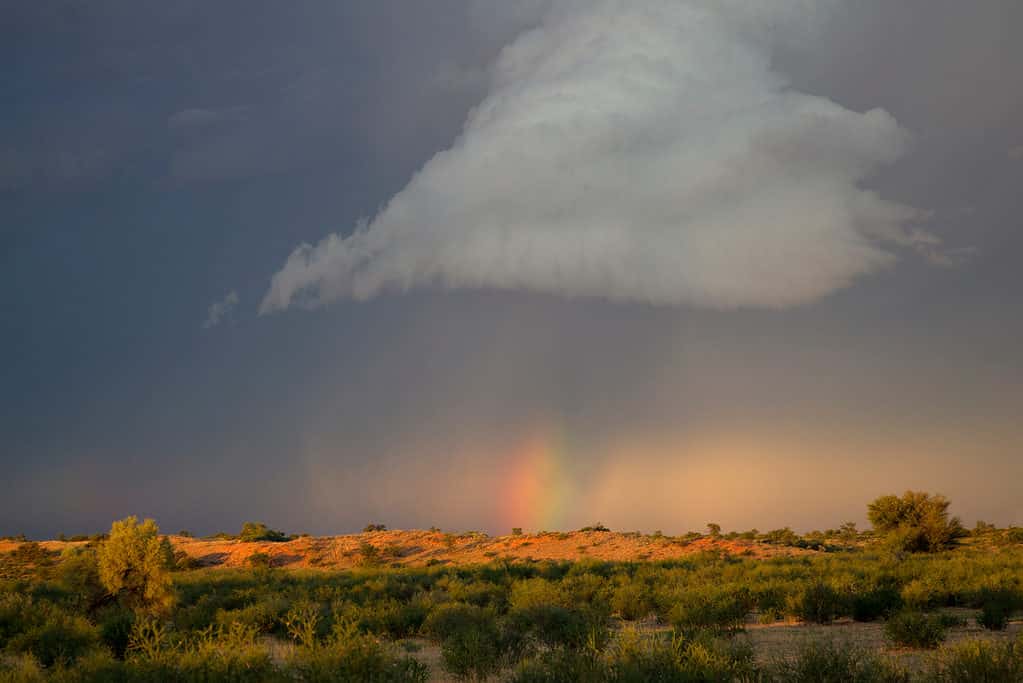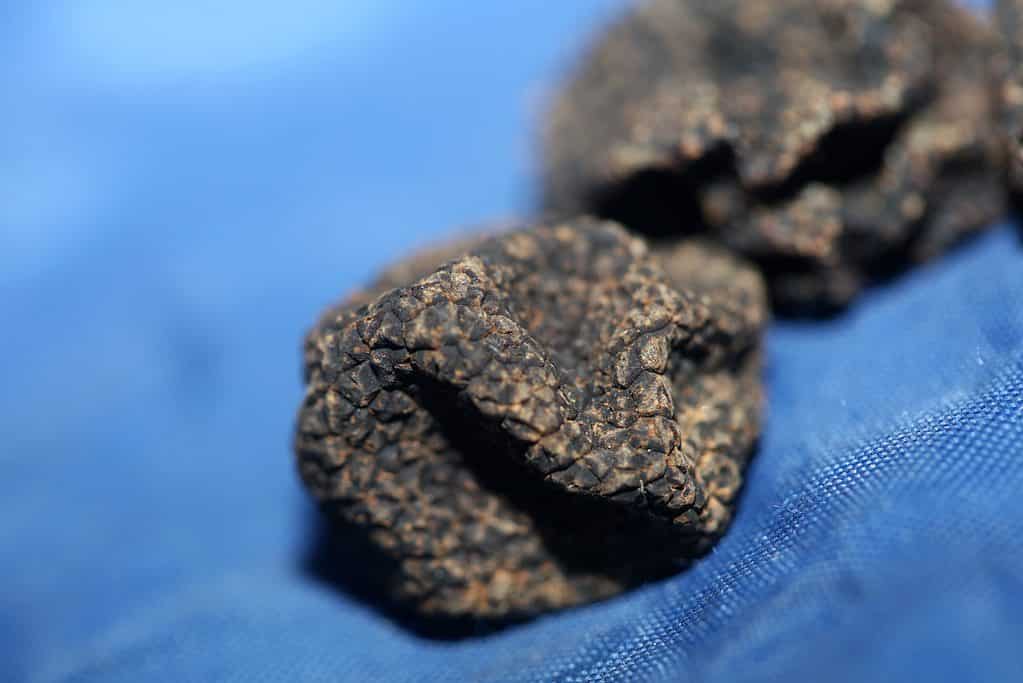Bring up the subject of truffles, and most people will likely think about the prized European varieties, such as the French black truffle or the Italian white truffle. However, did you know there are a large number of species besides the European ones, some of which are also delightfully aromatic and delicious?
In this guide, we’ll discuss three lesser-known but still wonderfully edible gourmet truffles:
- Pecan truffles
- Kalahari truffles
- Oregon white truffles
We’ll cover their classifications, where they grow and their ecological niche, the characteristics of each species, and how much they typically sell for.
So without further ado, let’s dive in!
Truffles: Fungal Classification
Truffles are a kind of fungus that produce their fruiting bodies underground. They’re known as subterranean fungi of the Ascomycota phylum. The mushrooms of this phylum are classified by their sac-like fruiting bodies, known as the ascus, and include mushrooms such as morels and cup fungi.
The well-known species are all classified in the Tuber genus. However, several other genera of truffles exist, including but not limited to Imaia, Kalaharituber, Terfezia, Leucangium, Elaphomyces, Peziza, and Geopora. Hundreds of species exist, but only a handful are associated with luxury and fine dining.
Pecan Truffle
The pecan truffle, also known as the American brown truffle, is native to Eastern North America. This specie’s Latin name is Tuber lyonii.
Ecology and Foraging
This mushroom is particularly well distributed across the Southeastern US, but it has been found as far north as Quebec and as far south as Northern Mexico.
The pecan truffle name stems from its affinity for establishing a symbiotic plant-fungi relationship (mycorrhizal) with the roots of oak, hickory, hazelnut and of course pecan trees. As such, foragers can often find them growing in commercial pecan orchards.
Throughout known truffle foraging history, foragers always used pigs to try and track down truffles. Pigs are not the most obedient animals and many of times the pig would eat the valuable fungus. So now, in the US and in many other countries people often use trained truffle-sniffing dogs to find these underground mushrooms. Depending on the region, the foraging season is mid-Summer through Fall. However, this time frame may be shorter in Northern regions as the fruiting bodies do not fare well after the first frost.

A
Lagotto Romagnolo
standing at the water’s edge. These types of water dogs have been used to search for truffles, giving it the nickname “truffle dog.”
©Grapsole79/Shutterstock.com
Pecan Truffle’s Characteristics
The pecan truffle has a light brown, irregularly round, and lumpy exterior, and when mature, a pale brown marbled interior with white veins from which the mushroom produces its spores.
Typically, the size of these mushrooms varies from 1-2 inches in diameter, making them a bit smaller on average than their luxury European counterparts.
The aroma and taste of Tuber lyonii are often described as earthy with rich nutty undertones.
Culinary Value and Cost
While the pecan truffle is far less known than gourmet European species, the use of this species among fine dining restaurants, particularly in the American South, is steadily growing. This is likely largely due to the increased interest in mycology in the US and an increased interest among fine dining restaurants in using locally/regionally sourced ingredients.
Currently, the cost of Tuber lyonii ranges from $10-$20 an ounce, making them a still expensive but much cheaper gourmet truffle than European black, white, or burgundy truffles.
Kalahari Truffles
Our next species grows in the sandy, desert regions of Namibia. The Kalahari truffle of the Pezizaceae family belongs to a monotypic genus, meaning the genus only contains one species. In this case, the monotypic genus is Kalaharituber, and the species is pfeilii.
Ecology and Foraging

As mycorrhizal fungi, the Kalahari truffles play an important role in the ecological health of the Kalahari Desert.
©Gaston Piccinetti/Shutterstock.com
As mycorrhizal fungi, the Kalahari truffles play an important role in the ecological health of the Kalahari Desert. Mycologists have confirmed that this species is mycorrhizal, with several species of plants in the Kalahari Desert, including sorghum, bermudagrass, and the declining acacia trees. In their extreme desert environments, host plants depend on nutrient exchange with Kalaharituber pfeilii to thrive.
The Khoisan people living in the Kalahari Desert regions of Namibia, South Africa, and Botswana have eaten Kalaharituber pfeilii for centuries. They search for these subterranean mushrooms by looking for cracking on the desert ground in areas they’re known to exist, indicating a possible fruiting body growing close to the surface. These fungi develop their fruiting bodies after heavy rainfall, which most often occurs between April-June.
Kalahari Truffle Characteristics
These truffles have a sandy to pale-chestnut-brown exterior, typically smooth, firm, and irregularly round. They appear similar to potatoes. The interior is pale off-white.
Specimens can typically reach anywhere from 1-5 inches across.
People often describe the taste as buttery, nutty, and earthy. Some compare its flavor to buttered corn with nutty undertones. Its scent is grassy and savory.
Culinary Value and Cost
These truffles are an integral part of the food and culture of locals. Kalahari truffles are calorically-dense and rich in fats, fiber, and vitamin B. People often prepare them fried, boiled, baked over coals, salted fresh, or grated fresh. When fried, they have a lovely texture, like crumbly cheese.
Compared to gourmet species from the US and Europe, Kalahari truffles sell for far less in local markets, at a few dollars per pound. This may be due to several reasons, including the widespread integration of Kalahari truffles into the local diet and a Western/Euro-centric undervaluing of African delicacies compared to Europe.
Oregon White Truffles
The next truffle on our list is another native species to North America- the Oregon white truffle, also known as the Oregon Winter white truffle (to distinguish it from the Oregon Spring white truffle). Belonging to the Tuberaceae family, the Latin name of this truffle is Tuber oregonense.

A close-up of black wild summer truffles mushrooms from the family Tuberaceae.
©BakalaeroZz Photography/Shutterstock.com
Ecology and Foraging
The Oregon white truffle grows along Western North America from Northern California to Southern British Columbia. Tuber oregonense is a mycorrhizal fungus that grows on the roots of its host plant in a symbiotic plant-fungi relationship. The root-like mycelium delivers nutrients in the soil to its host plant, while the plant provides the mycelium with the sugar it produces through photosynthesis.
Now, this species is mycorrhizal, with one specific species of tree, the Douglas fir. As such, the Oregon white truffle is integral in providing boosts of nutrient uptake for the old-growth Douglas fir forests of the West Coast.
Luckily for foragers of this mushroom, it has a rather extended growing season of October-March, with a peak harvest season of January-March. While cultivating mycorrhizal mushrooms is a difficult, and sometimes nearly impossible, task, some people have reported success in cultivating Tuber oregonense on Douglas fir Christmas tree farms.
Oregon White Truffle Characteristics
As the name suggests, the Oregon white truffle has an off-white to tan exterior that is spherical to irregularly round and lumpy. Generally, this species grows from 1-2 inches in diameter.
When young, the flesh is off-white. However, as it matures and produces spores, the flesh becomes tan with marbled white veins.
The aroma of this species is rich and complex. People often describe it as musky and garlic-y with notes of cheese and spices such as nutmeg and cedar.
Culinary Value and Cost
Mycologists only described this species in 2010, so awareness of this mushroom has been fairly limited to foragers and a small number of gourmet restauranteurs. However, in Oregon, where four species of choice edibles exist, the market for gourmet truffles like Tuber oregonense is growing.
Many fans of this mushroom say it is every bit as aromatic and flavorful as its European white truffle relative. However, while this species is still expensive, it sells on the retail market for a fraction of the cost of European white truffles. Currently, this species sells for about $500 per pound at the peak of the season.
The photo featured at the top of this post is © dav76/Shutterstock.com
The information presented on or through the Website is made available solely for general informational purposes. We do not warrant the accuracy, completeness, or usefulness of this information. Any reliance you place on such information is strictly at your own risk. We disclaim all liability and responsibility arising from any reliance placed on such materials by you or any other visitor to the Website, or by anyone who may be informed of any of its contents. None of the statements or claims on the Website should be taken as medical advice, health advice, or as confirmation that a plant, fungus, or other item is safe for consumption or will provide any health benefits. Anyone considering the health benefits of particular plant, fungus, or other item should first consult with a doctor or other medical professional. The statements made within this Website have not been evaluated by the Food and Drug Administration. These statements are not intended to diagnose, treat, cure or prevent any disease.
Sources
- A-Z Animals, Available here: https://a-z-animals.com/blog/morel-mushrooms-a-complete-guide/
- Mushroom Expert, Available here: https://www.mushroomexpert.com/tuber_lyonii.html
- University of Florida, Available here: https://edis.ifas.ufl.edu/publication/PP330
- Slow Food Foundation For Biodiversity, Available here: https://www.fondazioneslowfood.com/en/ark-of-taste-slow-food/kalahari-truffle/
- Natusfera, Available here: https://spain.inaturalist.org/taxa/517784-Tuber-oregonense
- Oregon Truffle Festival, Available here: https://oregontrufflefestival.org/faqs/
Thank you for reading! Have some feedback for us? Contact the AZ Animals editorial team.






